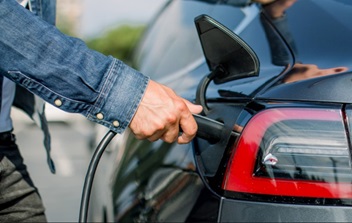 NATIONAL REPORT—As the automobile industry experiences a seismic transition toward electrification, the landscape of EV charging infrastructure in the United States is rapidly altering. This article analyzes the dynamic world of EV charging infrastructure and its implications for the future of transportation, from expected rise in electric vehicle (EV) numbers to important factors affecting the evolution of charging networks and possibilities on the horizon.
NATIONAL REPORT—As the automobile industry experiences a seismic transition toward electrification, the landscape of EV charging infrastructure in the United States is rapidly altering. This article analyzes the dynamic world of EV charging infrastructure and its implications for the future of transportation, from expected rise in electric vehicle (EV) numbers to important factors affecting the evolution of charging networks and possibilities on the horizon.
Overview of EV Charging Infrastructure Growth
The United States is rapidly narrowing the EV charging infrastructure deficit, with approximately 600 fast-charging stations constructed in the first quarter of 2024 alone, according to the US Department of Energy. With over 8,200 quick-turn EV stations countrywide, the ratio has risen to one for every 15 gas stations, thanks in part to federal financing and increased demand. Retailers such as Buc-ee’s and Wawa are also helping to expand the infrastructure, making EV charging more accessible than ever. Despite improvements, changing public opinion remains a struggle, but the future of EV charging in the United States is unquestionably promising.
The pattern of EV charging station expansion parallels that of car deliveries, with both Tesla and non-Tesla charging stations on an increasing trajectory. Tesla’s deliveries climbed significantly, notably beginning in 2020, and so did the number of Tesla charging points. Similarly, while non-Tesla car deliveries increased steadily, so did the number of non-Tesla charging points, but at a slower pace. This trend suggests that the EV charging infrastructure is expanding rapidly to enable the widespread use of electric vehicles.
Despite changes in individual business sales, the overall development and diversification of the EV industry drives the expansion of EV charging infrastructure. With increased competition and the release of more enticing EV models from numerous manufacturers, including major companies such as Ford, General Motors, Volkswagen, and BMW, demand for EV charging stations remains high. Furthermore, the global development of the EV industry, led by Chinese automakers such as BYD, highlights the need for a more extensive charging infrastructure to service these cars internationally. While Tesla’s sales may fluctuate, the overall pattern of EV industry development implies a persistent requirement for EV charging infrastructure to suit the expanding demand for electric vehicles.
The expected rise in various vehicle types between 2021 and 2030 indicates a substantial shift toward electrification. Passenger car numbers are predicted to increase from 2,807 in 2021 to an astonishing 44,180 by 2030, showing the growing usage of EVs. Similarly, light commercial vehicles are expected to increase from 24 units in 2021 to 3,801 units by 2030, while trucks and buses, albeit beginning from lower bases, have significant development potential. This transformational age in the automobile industry highlights a trend toward cleaner, more sustainable transportation options.
In the event that the US meets the government Zero Emission Vehicle (ZEV) sales target, forecasts show that the country’s EV fleet would increase to more than 48 million by 2030, accounting for around 15 percent of all cars on US roads. With roughly 30 million chargers required to satisfy demand, including 1.2 million public chargers, the infrastructure must be significantly expanded to accommodate the rapidly growing EV industry.
Key Trends Shaping the Evolution of EV Charging
Several significant factors are affecting the growth of EV charging infrastructure, mirroring the industry’s changing landscape. Major firms, like petroleum giant BP and Texas-based gas station chain Buc-ee’s, are spending extensively in EV charging networks, indicating a rising commitment to electrification. Partnerships between manufacturers and charging providers, as well as incentives like free home charging installations, are accelerating EV adoption and infrastructure development.
Furthermore, the growing popularity of high-range EV vehicles, such as pickup trucks with ranges of more than 400 miles per charge, is shifting customer attitudes and boosting excitement for electric transportation. Government initiatives and environmental concerns are also playing an important role, with subsidies designed to make EVs and charging stations more accessible and inexpensive.
Opportunities and Future Outlook
Novaone advisor report suggests the future of EV charging infrastructure holds immense potential, with many opportunities for innovation and growth. Vehicle-to-grid (V2G) technology, projected to reach a market size of over USD 147 billion by 2032, offers a promising avenue for balancing electricity supply and demand while maximizing the potential of parked EVs as energy assets. Stringent government regulations and advancements in battery technology are expected to further drive the adoption of V2G solutions, bolstering the resilience and efficiency of the electrical grid.
As the global automobile industry continues its electrification journey, the growth of EV charging infrastructure will have a significant impact on the future of transportation. By embracing emerging trends, encouraging stakeholder engagement, and capitalizing on technical breakthroughs, the United States can set the way for a sustainable and electrified mobility ecosystem that benefits both society and the environment.
Conclusion
As the electrification revolution gains traction, the need to expand EV charging infrastructure becomes increasingly clear. Investing in the expansion of EV charging networks not only speeds the transition to electric mobility, but also provides several advantages to society and the environment. We can lessen our dependency on fossil fuels, clean up the air, and tackle climate change by improving EV charging infrastructure. Furthermore, the extension of charging infrastructure creates economic potential by spurring innovation, job creation, and long-term growth.
Accepting the growth of EV charging infrastructure is more than simply a move toward cleaner transportation; it is a leap towards a more sustainable and resilient future. Governments, companies, and communities must work together to speed up the implementation of charging infrastructure, guaranteeing equal access, and realizing the full promise of electric mobility. With concentrated work and imaginative leadership, we can create a future in which electric vehicles are not just the norm, but also the foundation of a sustainable transportation ecosystem.
About GoSpace:
GoSpace is the preeminent Electric Vehicle Charging Solution provider for major corporations, boasting over 15 years of experience and an impressive portfolio of 1,000+ successful projects. They offer a comprehensive, turnkey solution for EV charging needs, encompassing everything from installation and permitting to inspections and finishing touches like striping, all the way to ongoing maintenance. GoSpace is a trusted name in the industry, committed to advancing the adoption of electric vehicles and sustainable transportation solutions.
About the Author
Srinivas Nalla, a research assistant at GoSpace, blends his sustainability studies background from the University of South Florida with his mechanical engineering degree from Queen’s University to drive eco-friendly innovation. With a keen understanding of the interconnectedness of environmental, economic, and social systems, Srinivas designs and implements projects that prioritize sustainability and social responsibility. His holistic approach, coupled with technical expertise, enables him to pioneer innovative solutions aimed at advancing environmental conservation and fostering a greener future.






